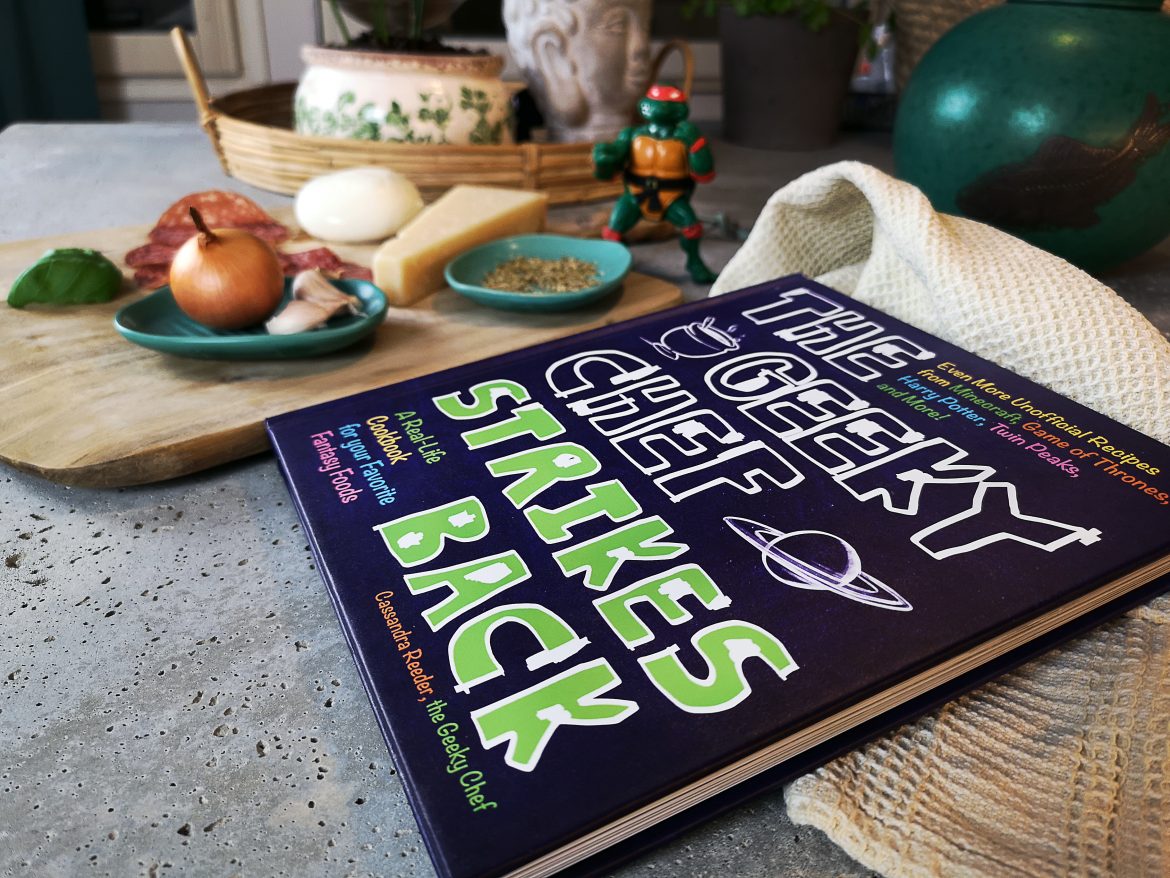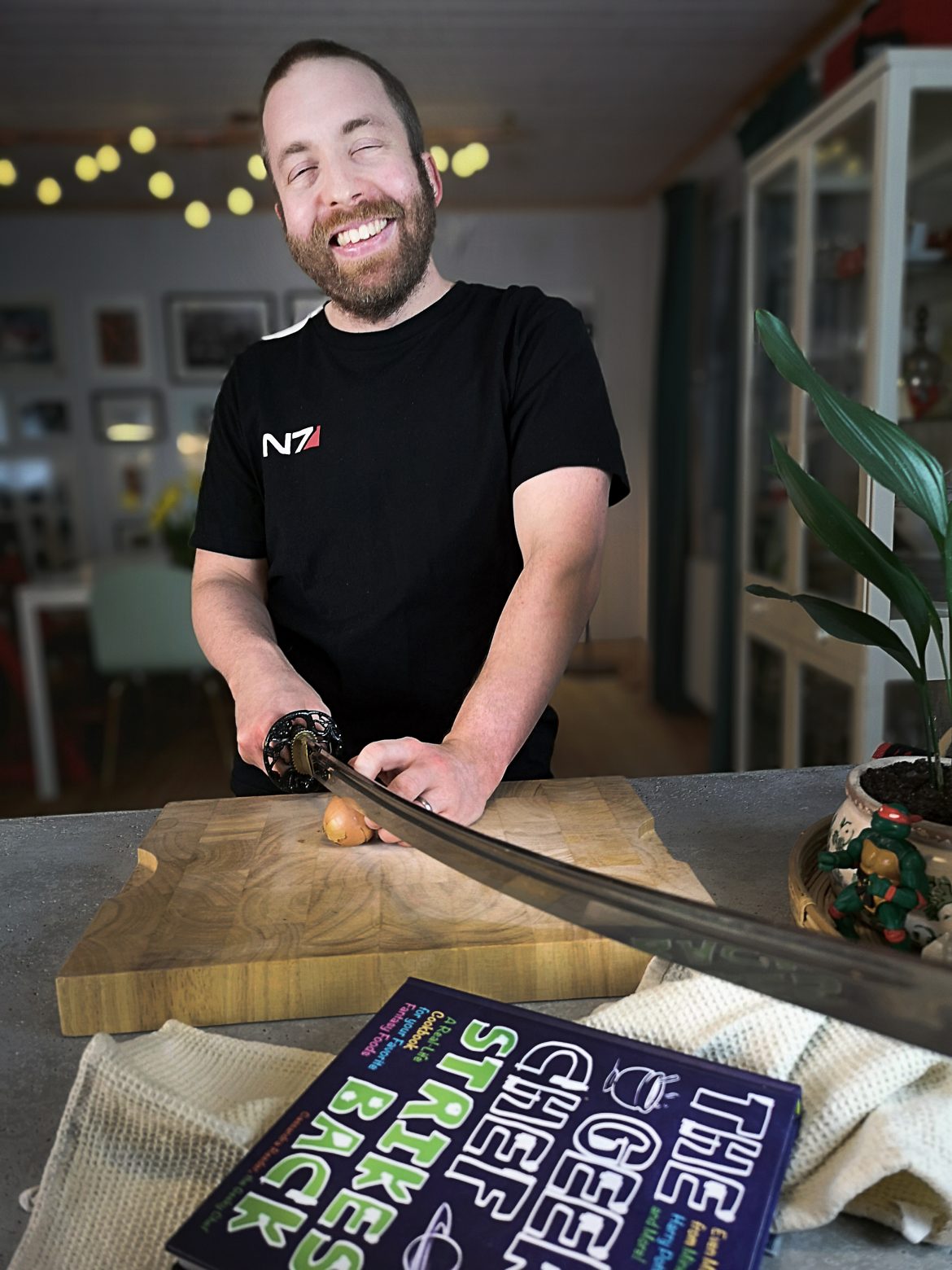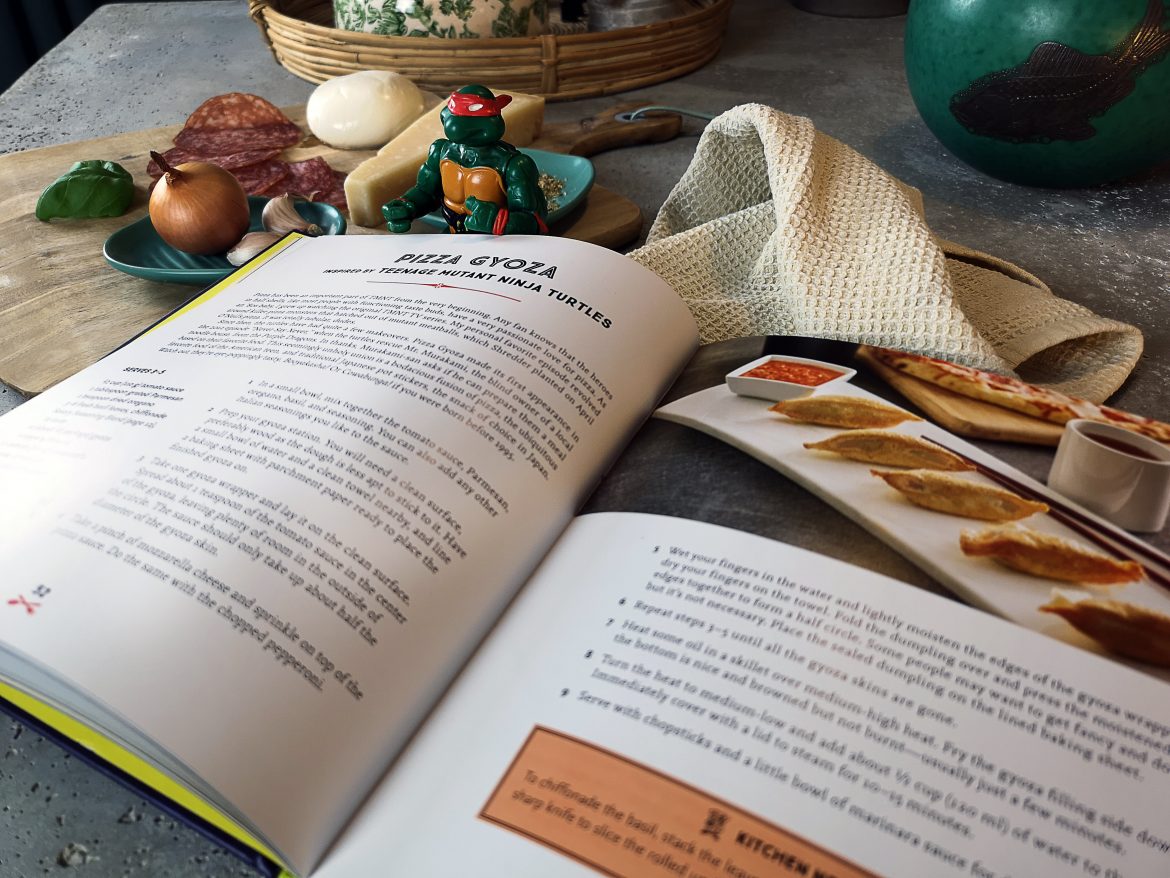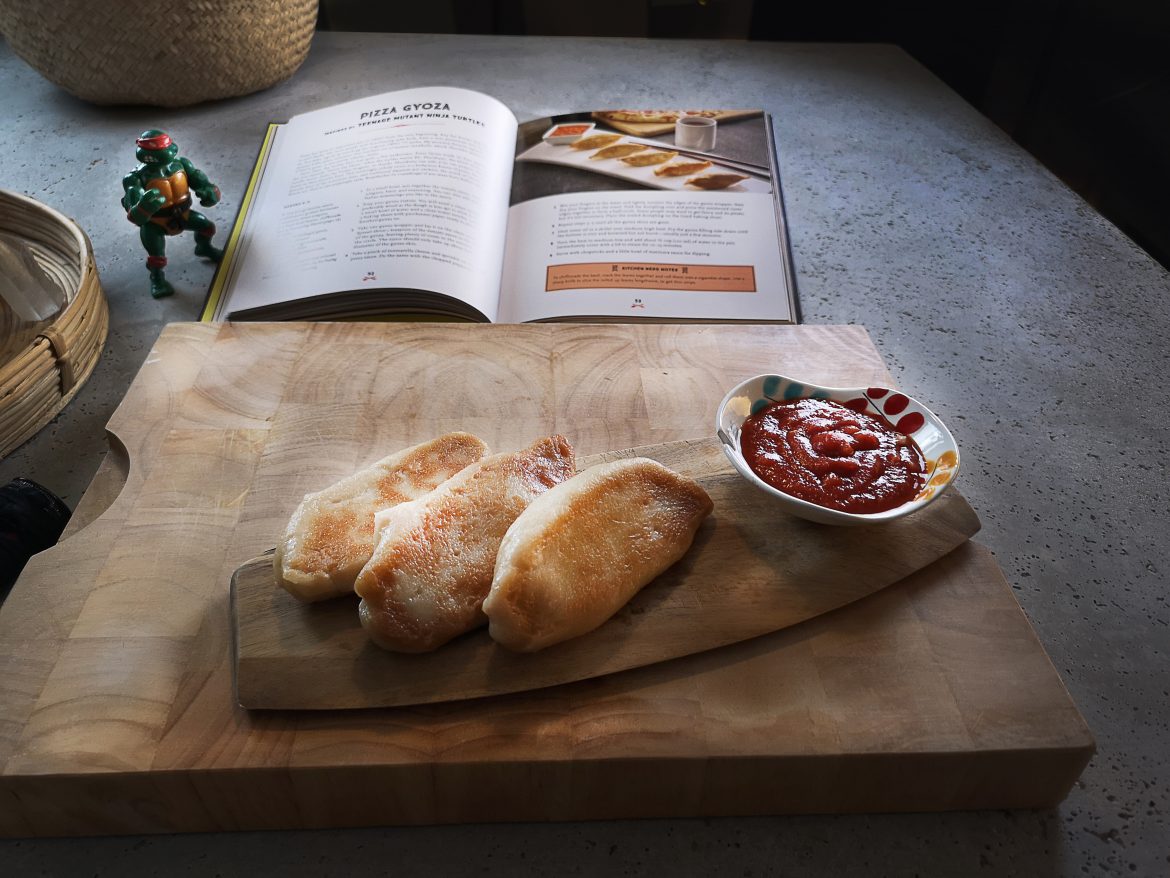TL;DR
The Geeky Chef Strikes Back is a fun cookbook packed with creatively inspired recipes from movies, games, and books. Author Cassandra Reeder, a self-proclaimed "lifelong nerd," blends humor, nostalgia, and nerdy trivia with well-tested dishes and appealing photos. While it offers a fantastic journey for fans of pop culture and cooking, some recipes lean on convenience items. The author also includes both American and metric measurements, making it accessible to a wider audience. Curious to see if these geeky concoctions live up to the hype? Read the full review to find out!
Writing a review of a cookbook? The Geeky Chef Strikes Back… Intriguing!
Indeed.
While cookbook reviews are surprisingly sparse, they also aren’t the most common subject matter. I likely wouldn’t review, say, rutiga kokboken (despite it being an excellent cookbook with fundamental recipes and practical advice). Even if I did, the review might not be particularly engaging.
Instead, I’m delving into a more specialized area; a niche within a niche.
This review focuses on a cookbook featuring recipes inspired by movies, TV series, games, and books. The author, Cassandra Reeder (better known as The Geeky Chef), specializes in developing recipes from these media. Cookbooks based on movies and TV series aren’t entirely novel. For example, “Wookiee Cookies: A Star Wars Cookbook” dates back to 1998.
What resonated with me about The Geeky Chef is the combination of approachable language and humor, alongside well-considered recipes and appealing photography. The author previously published a cookbook titled “The Geeky Chef“. This review, therefore, examines the sequel… a cookbook sequel!
The Geeky Chef Strikes Back blends nostalgia with the author’s personal anecdotes and some nerdy trivia. The level of detail can be quite specific, such as in the Bloodwine recipe, a beverage favored by Klingons (from Star Trek for those unfamiliar). The recipe even incorporates a few words in their native language. My own Klingon vocabulary is, shall we say, limited. In fact, non-existent would be a more accurate assessment. For clarity, “Klingonska” is the Swedish translation of the Klingon language.
It is important to note that these are not official recipes, but interpretations inspired by the source material, developed and rigorously tested by the author. She describes herself as a dedicated “home cook” and “lifelong nerd.”
The book is written in English (and Klingon, to a degree). Commendably, Cassandra includes both American and metric units of measurement, simplifying the cooking process by eliminating the need for constant conversion.
Each recipe begins with a description of the inspiration behind it, citing the specific movie, book, game, or TV episode. For instance, Twin Peaks is represented by two recipes: a whiskey-based cocktail topped with blue foam, and a cherry pie á la Norma Jennings, along with an explanation of the connection to The Geeky Chef strikes back.
The recipes are organized by type: starters, main courses, desserts, drinks (both alcoholic and non-alcoholic), basic recipes, soups, and snacks.
There are eight categories in total. Arguably, this could be streamlined, as three categories are dedicated to different types of desserts. The author differentiates between cookies, pies, and cakes/muffins, but I would consolidate these under a single category labeled “pastries.” Each category contains between five and nine recipes, totaling 56, designed to satisfy both culinary cravings and inner geek.
The question likely arises: “Are there any Star Wars recipes?” The answer is yes, two in fact. However, neither of these is for “blue milk” or “green milk” (a curious omission, given its presence in grocery store dairy sections). The recipes included are a vegetable soup (rootleaf soup), the one Yoda offers Luke in A New Hope, and a warm beer called Jawa Juice.
Overall, this is an enjoyable and imaginative cookbook, embodying a successful blend of originality and nerdy enthusiasm.
My primary critique concerns the use of several semi-finished products and canned goods in the recipes. Opting for fresh berries over canned, for example, would be preferable. While seasonality affects availability, advocating for fresh ingredients as a first choice, with canned as an alternative, would enhance the recipes.
A cookbook review necessitates trying some recipes, which I did. While browsing, I decided to prepare Pizza Gyoza, essentially dumpling pizza. As a child, I was a fan of the Teenage mutant hero turtles (as they were known then, due to concerns about the word “Ninja”). Michelangelo, my sole surviving Turtle from childhood, was present in the kitchen.
I followed the recipe precisely for evaluation purposes. The deviations were using homemade gyoza dough instead of store-bought, and adding yellow onion for enhanced flavor.
The dough consists simply of wheat flour and boiling water.
Measure 2.5 dl of wheat flour into a bowl and add 1-1.5 dl of boiling water. Begin with the lesser amount of water, adding more as needed. Mix until combined into a dough that is neither too dry nor too wet. Once cool enough to handle, knead for approximately five minutes until elastic. Allow to rest under a damp towel for 30 minutes.
While the timer on the mobile counts down, prepare the filling. The ingredients will yield 3-5 servings.
110 grams of strained tomatoes.
300 grams of mozzarella, cut into small pieces.
300 grams of pepperoni, cut into small pieces.
50 grams of finely chopped yellow onion (my addition).
1 tbsp freshly grated parmesan.
1 tsp dried oregano.
6 fresh basil leaves (chopped).
2 cloves of garlic (roasted in a pan and finely chopped).
2 tbsp rapeseed oil for frying.
Salt and black pepper to taste.
1 dl of water for steaming.
Preparation:
Combine tomatoes, parmesan, oregano, basil, garlic, and onion in a bowl. Season with salt and pepper to taste.
After the dough has rested, knead it briefly on a floured surface. Roll out the dough and divide it into four equal pieces, then divide each of those into five pieces, for a total of twenty. Roll each piece out very thinly, to about a millimeter, without tearing. The thinner the better. They should be both thin and round.
Place a teaspoon of the tomato mixture on each gyoza (thin dough piece), covering approximately half the surface and leaving the edges clear for folding. Add a pinch of mozzarella and a pinch of pepperoni over the tomato sauce (precise measurements, I know…).
To fold the gyoza, moisten the edges of the dough with a brush or finger. Fold the dough over to form a crescent shape and press the edges together to seal in the filling. Repeat with the remaining dough pieces.
Now, it’s time for the actual cooking. These can be fried, boiled, or steamed, depending on preference. The Geeky Chef suggests both frying and steaming, so I followed suit, achieving a desirable color and surface by frying one side first. Use a frying pan, a sauteuse, or a pot, ensuring it has a lid.
Heat the oil in your chosen cookware and fry a few gyoza at a time for a few minutes until they develop a golden surface. Then, pour in 1 deciliter of water and immediately cover with a lid to steam. Cook for 10-15 minutes. If boiling, cook for about 10 minutes; frying will be even quicker. Remove and allow to dry slightly before serving.
Serve with the leftover tomato sauce for dipping, or prepare additional sauce, as the dough itself is relatively bland and benefits from a flavorful accompaniment. The verdict? Eating pizza in dumpling form offers a novel experience, delivering the familiar pizza taste with a thinner, more neutral base.



